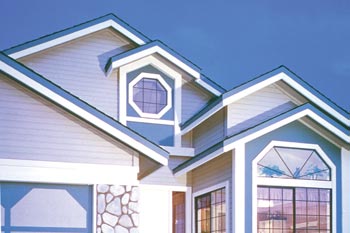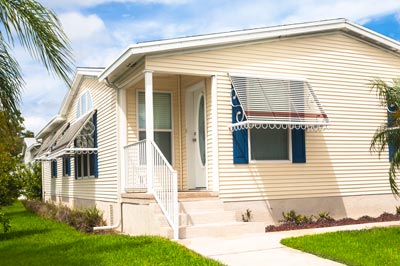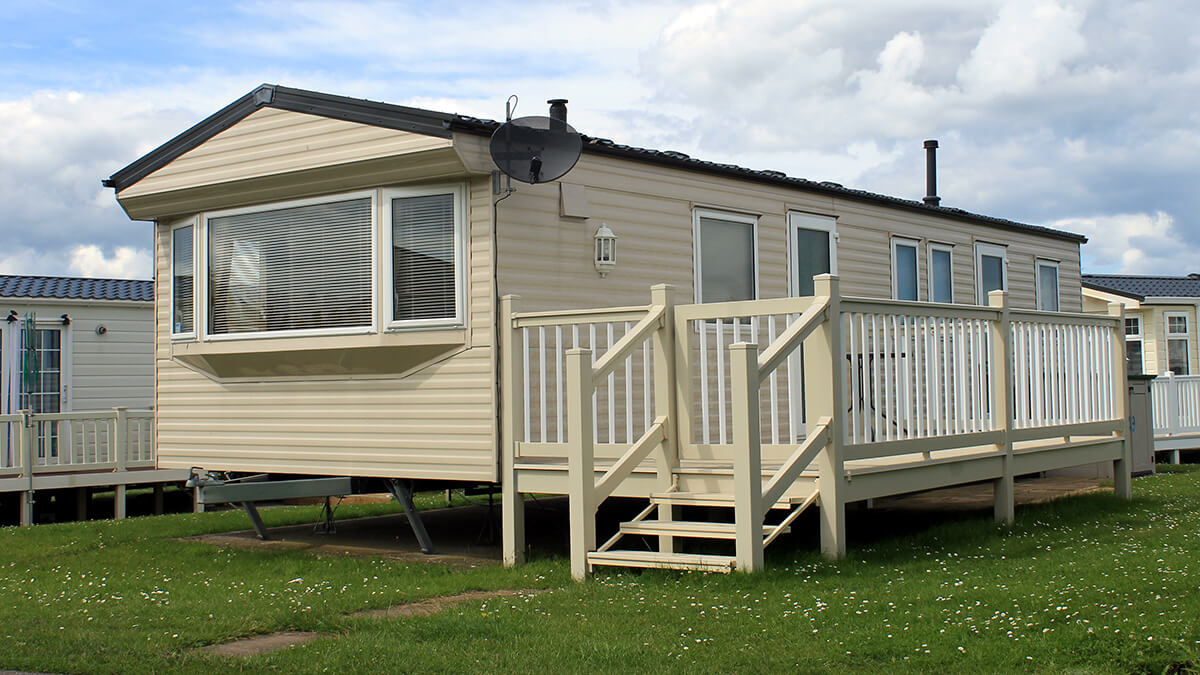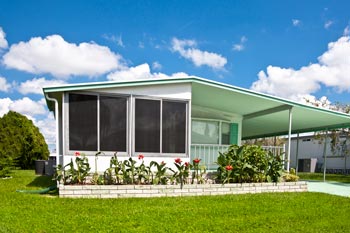Mobile Home Tornado Safety Tips

Tornadoes are nature's most violent storms and can strike with little or no warning. Within minutes, a tornado can destroy entire neighborhoods and leave a path of devastation that stretches for miles.
This information is specific to mobile home owners and will help you protect yourself against these fierce storms and learn all about tornado safety where to take shelter if a tornado does strike.
Learn the Difference Between a Watch and Warning
If the weather in your area seems threatening, tune into a local television or radio station. Listen carefully for weather advisories. Beware of a dark or greenish sky, hail, or the roaring “train” sound of an approaching tornado. Remember that a cloud of debris can mark the location of a tornado, even when a funnel cloud isn't visible.
- A tornado watch means weather conditions are right for violent weather to form, such as tornadoes or severe thunderstorms.
- A tornado warning means actual tornadoes, funnel-shaped clouds, have been detected by radar or sighted nearby.
When a tornado warning is given, seek shelter immediately and stay there until the danger has clearly passed.
Take Shelter in a Safe Place
If you're inside your manufactured home or mobile home when a tornado warning is issued, leave it immediately. Even if you use manufactured homes tie-downs to secure your home, it can be overturned by a tornado.
An underground shelter is almost always the safest place to be during severe storms. Many manufactured home parks have an office or community building with a reinforced basement or tornado shelter. If a park building is not available, find shelter in the basement of nearby site-built homes, schools or office buildings. Use a portable radio to monitor weather conditions.
In site-built structures with no basement, interior hallways on the lowest level are usually safest. Stay away from windows, doors and exposed walls. Get under something sturdy, such as a heavy table and protect your head from falling objects and flying debris.
If you take shelter in a bathroom, lie in the bathtub. If possible, wrap yourself in coats, blankets or sleeping bags for protection against flying debris.
Take Cover if You Can't Reach a Shelter
If there's no time to reach a safe shelter, go outside and lie flat in a nearby ditch, culvert, ravine, or depression in the ground, and cover your head with your hands. Never take shelter underneath elevated structures like a mobile home. A tornado can pick up the home and put you in severe danger.
Proceed with Caution After the Storm
The aftermath of a tornado can also be very dangerous. Stay in your shelter until the official “all clear” is given. Then:
- Check the people around you for injuries and call for help if needed.
- Watch out for broken glass, gas leaks and downed power lines.
- Use caution before entering damaged buildings to avoid injury.
- Do not enter your dwelling if it's badly damaged. If you are insured with Foremost our toll-free 24-hour claim reporting number is 1-800-527-3907 or you can file a claim online.
- Prevent further damage to your property by making minor repairs, such as putting a tarp over a damaged roof.
Protect Yourself and Home in Advance
No one can stop a tornado, but you can minimize the damage to your home and protect your family by taking these practical steps ahead of time:
- Identify and visit a nearby tornado shelter.
- Complete a written tornado plan for your family to follow.
- Prepare an emergency preparedness kit.
- Review your insurance coverages and terms.
Inside your home:
- Inside your home:
- Install sturdy “L-brackets” to secure your major appliances to a wall.
- Install child safety locks on all cabinets.
- Remove heavy objects from upper shelves.
- Make sure your hot water heater and furnace are securely attached to your home and not just sitting freely in a utility closet.
- Learn how to shut off water, gas and electricity.
- Remove flammable or hazardous materials.
- Mount hanging pictures on “V” hooks.
Outside your home:
- Inspect your mobile home's anchor and tie-down system at least every six months or after a re-leveling. Make sure the tie-downs are not cracked, torn or rusted.
- If necessary, have a licensed contractor install or make repairs to your tie-down system.
- Install extra mobile home tie-downs to your home. Add extra tie-downs to outlying structures, such as storage sheds, swing sets, and others.
- Make sure roofing, awnings, windows and siding are secure and problem-free.
- Clear your yard of things that could become dangerous debris during a storm, such as dead trees, loose branches, or stray objects like shovels, poles or bikes. Encourage neighbors to do the same.
- Make sure perimeter fencing is well installed and not loose or rickety.
Keeping adequate insurance coverage for your home and personal property is one of the best investments you can make. Check your policy's coverage limits, deductibles and exclusions. If you've purchased any valuable items or made any additions to your home since your last renewal, make sure these are covered by your policy.
You can help things go smoothly at claim time by preparing a personal property inventory of your household furnishings and possessions. Take photos or a video of all your items and keep receipts of valuable items. Store your inventory in a safe deposit box or another secure place away from your home. For more information on how to create an inventory, read this Personal Property Inventory article.
Looking for mobile home/manufactured home insurance? Get a quote today by calling 888-244-8092 to speak with a licensed agent or find a Foremost Insurance agent near you.





